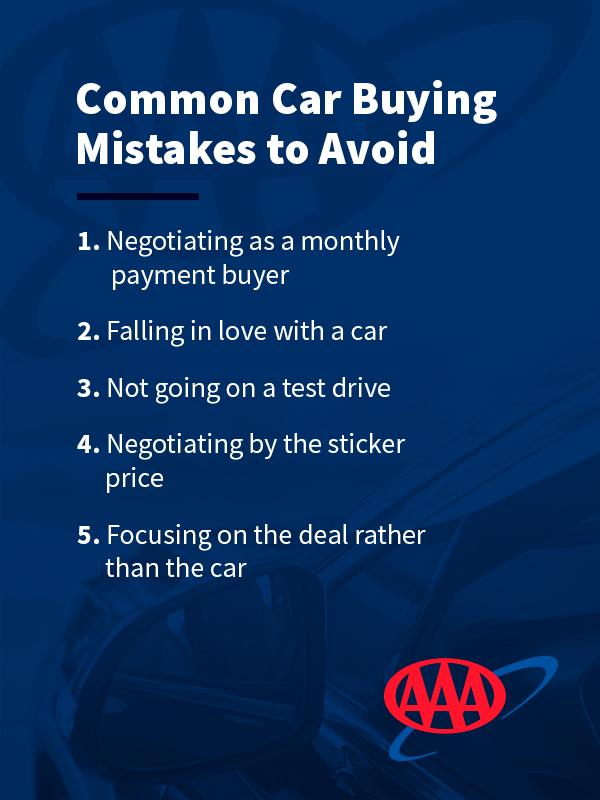Buying a car is often one of the most important financial decisions we make, blending practicality with personal aspiration. Whether it’s your first set of wheels or an upgrade to match your evolving lifestyle, the car-buying journey can be both exhilarating and daunting. Yet, amid the excitement, manny buyers unwittingly fall into common pitfalls that can lead to regret, financial strain, or even buyer’s remorse.From overlooking essential research to skipping the fine print, these missteps can turn a dream vehicle into a burdensome obligation. In this article, we’ll explore the top mistakes to avoid when buying your next car, empowering you to make informed choices and drive away with confidence and satisfaction.
Understanding Your Budget and Financing Options
When it comes to purchasing a car, having a clear grasp of your financial situation is crucial. Begin by evaluating your monthly income and fixed expenses. Determine how much you can comfortably allocate to a car payment without straining your budget. Consider creating a simple budget spreadsheet or using financial apps to keep track of your expenditures. This will provide insight into how much you can afford for both the initial price of the vehicle and ongoing costs such as fuel, insurance, and maintainance. Here are a few key aspects to assess:
- Down payment: Aim for at least 20% of the vehicle’s price to reduce your loan.
- Loan term: Longer terms may mean lower payments, but you’ll pay more in interest.
- Interest rates: Shop around for the best financing options to minimize costs.
Next, familiarize yourself with financing options available in the market. While dealership financing can be convenient, it may not always offer the best interest rates. Consider alternatives like credit unions or online lenders, which frequently enough provide more competitive terms. It’s worth obtaining pre-approval for a loan to understand your options better and strengthen your bargaining position at the dealership. A comparison of potential monthly payments based on different financing scenarios can be helpful:
| Loan Amount | Interest Rate | Loan Term (Months) | Monthly Payment |
|---|---|---|---|
| $20,000 | 3% | 60 | $359 |
| $20,000 | 5% | 60 | $377 |
| $20,000 | 7% | 60 | $396 |

Researching Vehicle Reliability and Safety Ratings
When selecting your next vehicle, overlooking reliability and safety ratings can lead to costly mistakes. Begin your research by consulting trusted sources that provide comprehensive reviews and ratings. These evaluations help you understand how a vehicle performs over time and its ability to protect passengers in the event of an accident. Key platforms to consider include:
- Consumer Reports – Offers detailed assessments based on extensive testing.
- National Highway Traffic Safety Administration (NHTSA) – Provides star ratings based on crash tests.
- Insurance institute for Highway Safety (IIHS) – Evaluates vehicles on safety features and crashworthiness.
In addition to gathering ratings,delve into consumer feedback to gauge real-world experiences. Review forums and social media can reveal consistent issues or praises about specific models. Keep an eye on trends in repair costs and frequency, as these factors can significantly affect your ownership experience. Below is a simple table comparing a few popular vehicles based on reliability and safety ratings:
| Vehicle Model | reliability Rating | Safety Rating |
|---|---|---|
| Toyota Camry | High | 5 stars |
| honda Accord | High | 5 stars |
| Ford Fusion | medium | 4 stars |

Assessing Your Needs vs. Wants in a Vehicle
When it comes to choosing a vehicle, it’s essential to differentiate between what you need and what you want. Start by evaluating your daily life and how a car will fit into it. Consider essential factors such as:
- Commute Distance: how far do you travel every day?
- Passenger Capacity: Do you frequently enough drive with family or friends?
- fuel Efficiency: How vital is it to save on fuel expenses?
- Safety Features: Are advanced safety features a top priority for you?
Once the necessities are outlined, it’s time to identify your wants. These might include aesthetic choices,brand preferences,or additional tech features that enhance your driving experience. examples of these desires can be:
- Smart Technology: Integrated navigation or advanced audio systems?
- Luxury: Leather seats and custom interiors?
- Performance: Do you crave speed or off-road capabilities?
- Color and Style: Is the car’s exterior and interior design critical to you?

Navigating the Test Drive Experience Effectively
When heading out for a test drive, it’s vital to approach the experience with a clear mind and purpose. Avoid getting caught up solely in the excitement of a new car; instead, focus on specific aspects that will impact your driving experience. Before you even slide into the driver’s seat, create a checklist of features and performance metrics that matter most to you, such as:
- Comfort – Evaluate seat support and visibility.
- Handling – Pay attention to responsiveness and steering.
- Noise Levels – Note any distracting sounds during your drive.
- Technology – Ensure that all in-car functions meet your needs.
Another common pitfall is failing to assess the car in varied conditions. As you drive, make an effort to experience different environments, like city streets and highways, to fully gauge the vehicle’s performance. Additionally, consider bringing along a trusted friend or family member for a second opinion; they may notice things you overlook.Remember to ask the salesperson questions about the car’s features, warranty, and service history.Maintaining an open dialog ensures you have all necessary information to make an informed decision rather than succumbing to pressure.
Future outlook
As you navigate the thrilling journey of purchasing your next vehicle, remember that knowlege is your greatest ally. By steering clear of the common pitfalls highlighted in this article, you can drive home with confidence, knowing you’ve made an informed choice that suits your needs and budget. Whether you’re eyeing a sleek sedan, a rugged SUV, or an eco-friendly hybrid, each decision is an opportunity to reflect on your preferences and priorities. Keep these tips in your toolbox as you embark on your car-buying adventure, and don’t forget: the right car not only fits your lifestyle but also sparks joy every time you hit the road. Here’s to making informed decisions and enjoying the ride ahead! Safe travels!
